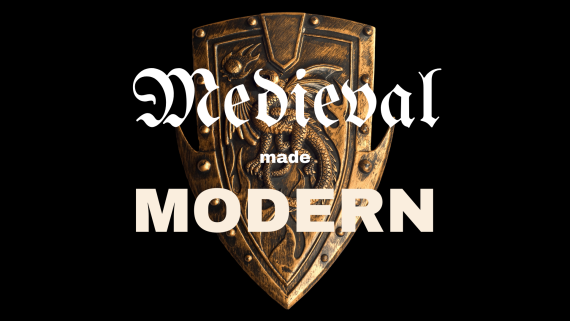Medieval Made Modern
The medieval period has always occupied a paradoxical position in our cultural memory. An age of fantasy unimaginably distant from historical reality, it is also an era onto which writers and artists—and now moviemakers and gamers—have long projected their fears and desires. Why do cultures remake certain figures from the past—but not others—in their own image?
Join Professor Emerita Robin Stacey in this five-lecture series where she looks at the present’s relationship with the past through the lens of the making and remaking of important historical figures—some real, some fictional, and some the creatures of myth.
A Desire for Dragons
This opening lecture introduces the main themes of the series with a look at some of the most fearsome creatures of all—dragons. Where do they come from, what significance did they have for those who wrote about them, and why are we still talking about them today? Fans of Tolkien and Martin, this is your moment!
Arthur, rex quondam, rexque futurus
From Roman soldier to chivalric king to improbably egalitarian Sarmatian freedom fighter, Arthur has done it all. But did he really exist? How did the understanding of his nature and importance change over the centuries? And what about Guinevere? She is part of every modern Arthur retelling, but where did her story begin?
Tales of the Greenwood
Hard as it is to imagine today, Robin Hood was but one of many fictional and historical outlaws making the rounds in medieval and early modern England. He has been interpreted in almost every way one can imagine, from nature god to miffed aristocrat to defender of the common folk. What makes his legend so enduring? And why do we seem to make so much more of Maid Marian than previous generations did?
"A sure sign of a lunatic": The Remaking of the Templars
Perhaps no group has travelled further in the popular imagination than the Templars. Once an international military and banking order associated with the Crusades, they appear now most commonly as the progenitors of the Freemasons, members of a secretive Order guarding the Holy Grail, and the stars of numerous video games. How and why did this happen?
Interpreting Joan
Joan of Arc is one of the most fascinating figures of the Middle Ages--and one of the most baffling as well. Regarded by her supporters as a saint and visionary, she was burned by the Catholic Church in 1431 as an apostate who rejected God’s natural order by dressing as a man. That same church canonized her in 1920 after a sustained campaign by an extremist right-wing political movement in France; in our day, however, she appears frequently as a proto-feminist and pioneer of non-binary gender identity. So who was she really, and why has she mattered so much and so differently to so many?
